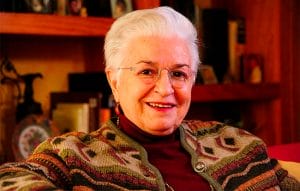Born near the ocean in Tamaulipas, Mexico, Luna discovered early on that she was a great swimmer: she completed her Red Cross lifeguard training by age 8. After working in her father’s jewelry store and as a swimming instructor, she returned to school at the Instituto Nacional de Antropología e Historia — the National Institute of Anthropology and History. A lecture about the Abu Simbel temples, rediscovered during the construction of the Aswan Dam, made her wonder about how much Mexican history was underwater, and decided to make that the concentration of her studies. She was good at it: the Institute asked her to organize a course on undersea archaeology. Her mentor, American underwater archaeologist George Bass, agreed to help develop the curriculum. Luna subsequently founded the Division of Underwater Archaeology (Subdirección de Arqueología Subacuática) within the Institute.

In 1978, Luna was alerted that treasure hunters had found the Nuestra Señora del Juncal, the flagship of the New Spain Flotilla, which sank in the Gulf of Mexico during a hurricane in 1631. She realized the rest of the flotilla must be nearby, and found those ships. She successfully lobbied Mexican authorities to deny permits to commercial entities to loot the ships. In 2011, Luna was the first Latin American to receive the J.C. Harrington Award from the Society for Historical Archaeology, only the fourth woman ever to win that prize and only the second underwater archaeologist — after Bass. The same year, she was the co-recipient with three other women of the Society for Historical Archaeology’s Award of Merit for their work in protecting underwater shipwrecks from treasure hunters. She taught underwater archeology for nearly 40 years. María del Pilar Luna Erreguerena died on March 15, at 76.
